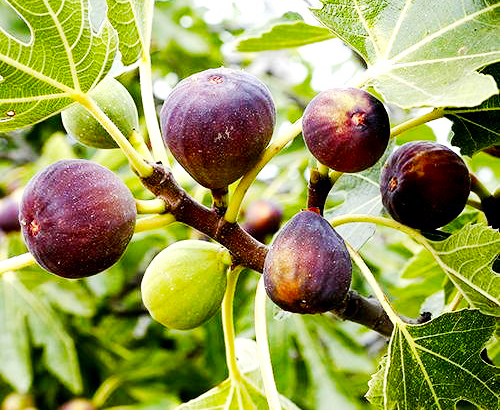How to grow and care Fig Plant
The Fig Plant: A Basic Overview- Ficus carica, the scientific name for the common fruit-bearing shrub, is
valued for its tasty and healthy fruits. It is native to Western Asia and the
Middle East and is a member of the Moraceae family. Because of its flexibility
and delicious fruits, it has spread to many places of the world over time.
height of 10 to 30 feet. Its broad, lobed leaves are rough on top and soft
below, with a smooth, Gray bark. These leaves provide the tree its own visual
attractiveness in addition to giving it a rich green look.Figs have a special method of fruit production. In contrast to several other
fruits, figs grow from an inverted cluster of flowers. In reality, the fruit is
a syconium, a fleshy structure with several small flowers within. Because of
this, figs are no longer considered a simple fruit but rather an
infructescence.
warm winters and long, hot summers. But, because of their amazing ability to
adapt, they may also thrive in colder climates if given the right care and
protection over the winter. Figs do not have a real preference for soil. If
there is adequate drainage, they may thrive in a range of soil types, including
sandy, loamy, and clay soils. Root rot and other problems can result from
poorly drained soils. Compost or other organic matter can be added to the soil
to enhance its quality and supply vital nutrients for plant development.
too difficult. They may be cultivated from cuttings, seeds, or young plants in
the nursery. Early spring or late fall are the ideal seasons to sow fig trees.
Select a sunny area with soil that drains properly, then dig a hole that is
just a little bit bigger than the plant’s root ball. After inserting the plant
into the hole, cover it completely with dirt and water. Figs need to be watered
often, especially in the dry season. Overwatering, however, is to be avoided
since it may damage the roots. Mulching the area surrounding the plant’s base
might help it stay wet and deter weeds. Another crucial part of caring for fig plants is pruning. Frequent
trimming gets rid of any dead or diseased branches, promotes fruit output, and
helps the tree keep its form. Pruning fig trees is best done in the early
spring or late winter, before new growth appears.
Diseases and Pests- Although they are often resilient, fig plants can be harmed by pests
such worms, scale insects, and aphids. These issues may be managed with routine
inspections and natural pest control techniques like using organic sprays or
importing helpful insects. Fig plants can also be impacted by fungi that cause
leaf spot and rust. These problems may be avoided by making sure there is
adequate air circulation, avoiding overhead watering, and using the right
fungicides.
fruits do not ripen well off the tree, they should be completely ripe before
being picked. When ripe, figs become tender to the touch and may undergo color
changes or drooping. Figs can be consumed raw, dehydrated, or added to a
variety of foods. They are a nutritious complement to any diet since they are
high in fiber, vitamins, and minerals. Figs are not only a delicious snack but
may also be added to salads, desserts, and preserves.
Growing figs is a satisfying and adaptable garden plant. It is
understandable why figs have been prized for thousands of years given their
delectable fruits and low maintenance needs. The fig plant may be a pleasant
addition to any garden, regardless of gardening experience.



